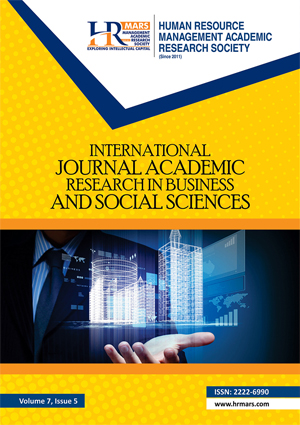
ISSN: 2222-6990
Open access
Some studies highlight the symbolic use of “dead” eyes, such as button eyes in Coraline, there is limited research on how these design choices influence audience perception, emotional engagement, and character development across different animation styles and cultural contexts. An in-depth examination of eye modelling in animation can bridge this gap by providing insights into the aesthetic, emotional, and narrative functions of eyes, as well as their role in enhancing character relatability and visual storytelling. Drawing from historical Eyes have long been recognized as the “windows to the soul,” playing a crucial role in conveying emotions and inner states in art and storytelling. In animation, eye modelling design serves as a powerful tool for enhancing emotional depth, narrative engagement and character development. Despite its importance, research on eye modelling as an independent design element remains limited, particularly regarding its technical, artistic and cultural implications. This study investigates the significance of eye modelling design in animated characters, focusing on how it influences emotional resonance and audience perception. Focuses on eye modeling design of animation characters in the Chinese animation market. Drawing on Chinese, Japanese and American animation films. The research highlights the symbolic and expressive role of eyes in visual storytelling. The research addresses a critical gap by examining eye modeling’s role in emotional expressiveness and its aesthetic impact across diverse animation styles. The findings provide valuable insights for animators, designers, and researchers by offering a deeper understanding of the narrative and visual significance of eyes in animation. By emphasizing the nuanced role of eye modeling, this study contributes to the broader discourse on animation design and visual storytelling, paving the way for innovative approaches to character creation and audience engagement.
Adorno, T. W. (1997). Aesthetic theory. A&C Black.
Alzahrani, T., Al-Nuaimy, W., & Al-Bander, B. (2021). Integrated multi-model face shape and eye attributes identification for hair style and eyelashes recommendation. Computation, 9(5), 54.
Cavalier, S., & Chomet, S. (2011). The world history of animation (Vol. 416). Berkeley, CA: University of California Press.
Darwin, C. (1872). The descent of man, and selection in relation to sex (Vol. 2). D. Appleton.
Kant, I. (2000). Critique of the Power of Judgment. Cambridge University Press.
Mohanty, S., Dhal, S., & Swain, S. C. (2023). The Power of Visibility: Queer Characters in Japanese Anime. Journal of Survey in Fisheries Sciences, 10(4S), 2815-2826.
Lam, S. M., & Kim, Y. K. (2003). Partial-incision technique for creation of the double eyelid. Aesthetic surgery journal, 23(3), 170-176.
Hang, L. (2012).Analysis of the characteristics of Chinese animation modelling and European, American and Japanese animation modelling. Art Research(03),100-101.
Shengyang, L. (2016). On the line of Chinese figure painting. China Academy of Art.
Liu, K., Chang, K. M., & Liu, Y. J. (2022). Facial Feature Study of Cartoon and Real People with the Aid of Artificial Intelligence. Sustainability, 14(20), 13468.
Li, Y., & Jiang, Q. (2023). The development and influence of Japanese aesthetics and its manifestation in Japanese animation. In SHS Web of Conferences (Vol. 153, p. 01007). EDP Sciences.
Lu, A. S. (2008). The many faces of internationalization in Japanese anime. Animation, 3(2), 169-187.
Luo, J. (2017). Research on the Characteristics of Chinese Animation. In 2017 4th International Conference on Literature, Linguistics and Arts (ICLLA 2017) (pp. 165-168).
Rousseau, J. J. (2021). Emile. Phoemixx Classics Ebooks.
Rutherford, K. (2023). Sociolinguistics and Lip Synchronization: How Phonetic Dialects Impact Character Design and Facial Animation.
Mo, X. (2009). The origin of the traditional Chinese portrait painting. Journal of Hubei Academy of Fine Arts, 000(003), 22-25.
Zhang, W., & Yun, T. (2018). Application of Physiognomy to the Facial Design of Animated Characters. TECHART: Journal of Arts and Imaging Science, 5(3), 19-23.
Ting, H., Bakar, A. H. A., & Rosli, H. (2025). Windows to the Soul: The Type of Eye Modelling Shape Design in China Animation Film Market. International Journal of Academic Research in Business and Social Sciences, 15(1), 1493–1504.
Copyright: © 2025 The Author(s)
Published by HRMARS (www.hrmars.com)
This article is published under the Creative Commons Attribution (CC BY 4.0) license. Anyone may reproduce, distribute, translate and create derivative works of this article (for both commercial and non-commercial purposes), subject to full attribution to the original publication and authors. The full terms of this license may be seen at: http://creativecommons.org/licences/by/4.0/legalcode